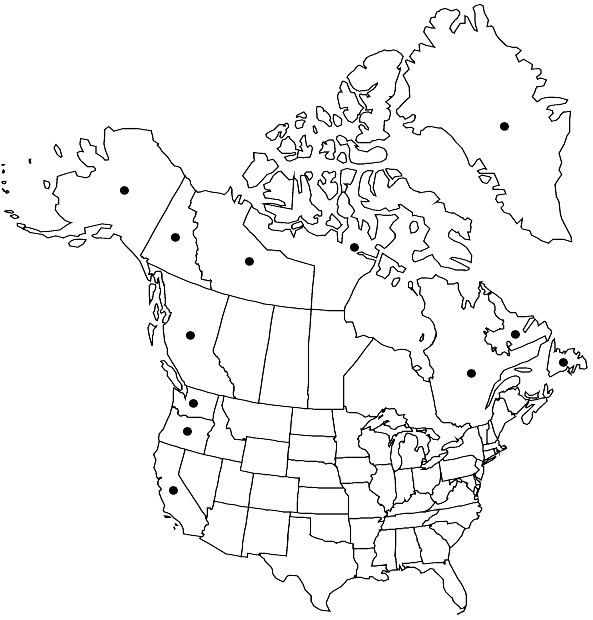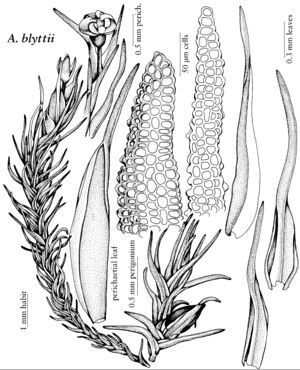Andreaea blyttii
in P. Bruch and W. P. Schimper, Bryol. Europ. 6: 155, plate 635. 1855,.
Plants brown to black. Leaves erect, curved or secund, becoming subulate from an ovate or narrow-rectangular base, widest in proximal half of leaf, apex symmetric; costa present, percurrent and filling the leaf apices, strong, terete, usually reaching the leaf insertion; leaf margins entire or crenulate; basal laminal cells rectangular, walls thin and straight; medial laminal cells usually quadrate, 1-stratose or rarely 2-stratose juxtacostally, lumens rounded-quadrate; laminal papillae rare. Sexual condition dioicous; perichaetial leaves differentiated, convolute-sheathing. Spores (10–)13–15(–20) µm.
Habitat: Rock, alluvium, edges of snow melt areas
Elevation: low to high elevations
Distribution

Greenland, B.C., Nfld. and Labr., N.W.T., Nunavut, Que., Yukon, Alaska, Calif., Oreg., Wash., n Europe, n Asia, Atlantic Islands (Iceland).
Discussion
Andreaea blyttii is distinguished by leaves with long, narrow subula, nearly filled with the strong costa, and rectangular basal cells, and small spores. Collections commonly lack sporophytes. Distal laminal cells may be minutely mammillose abaxially, and the leaf margins are thus crenulate.
Selected References
None.
